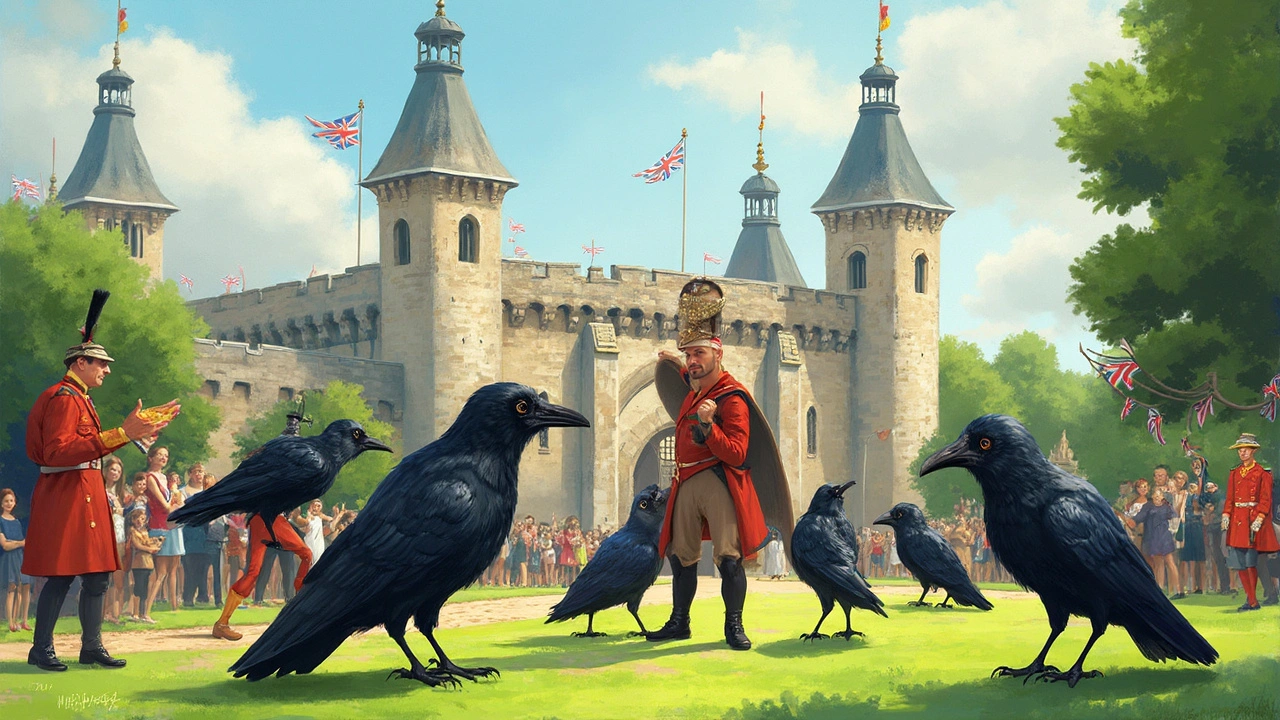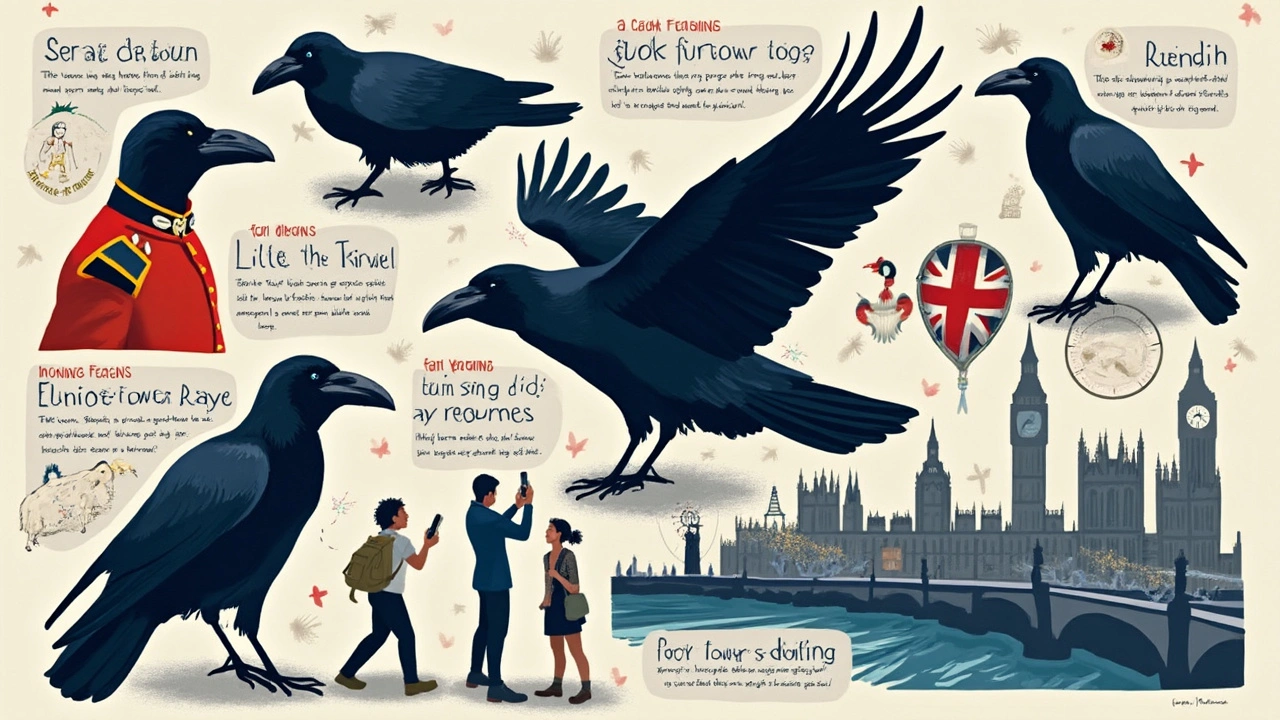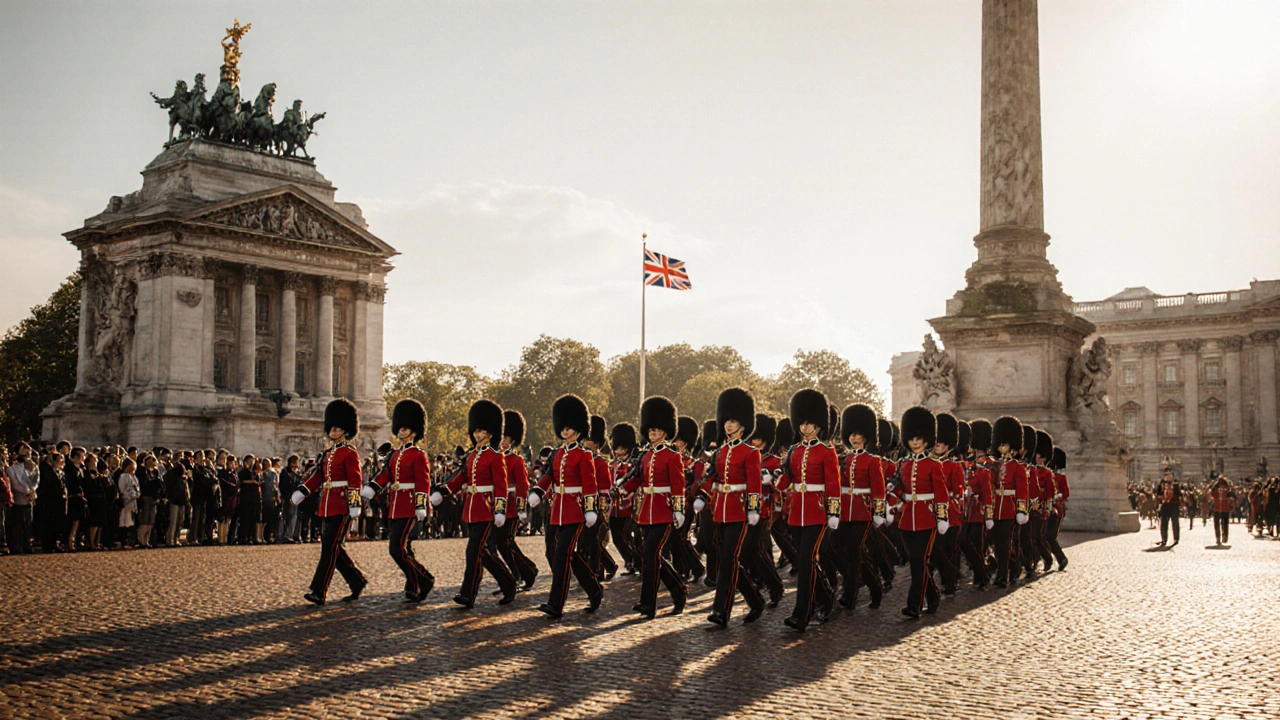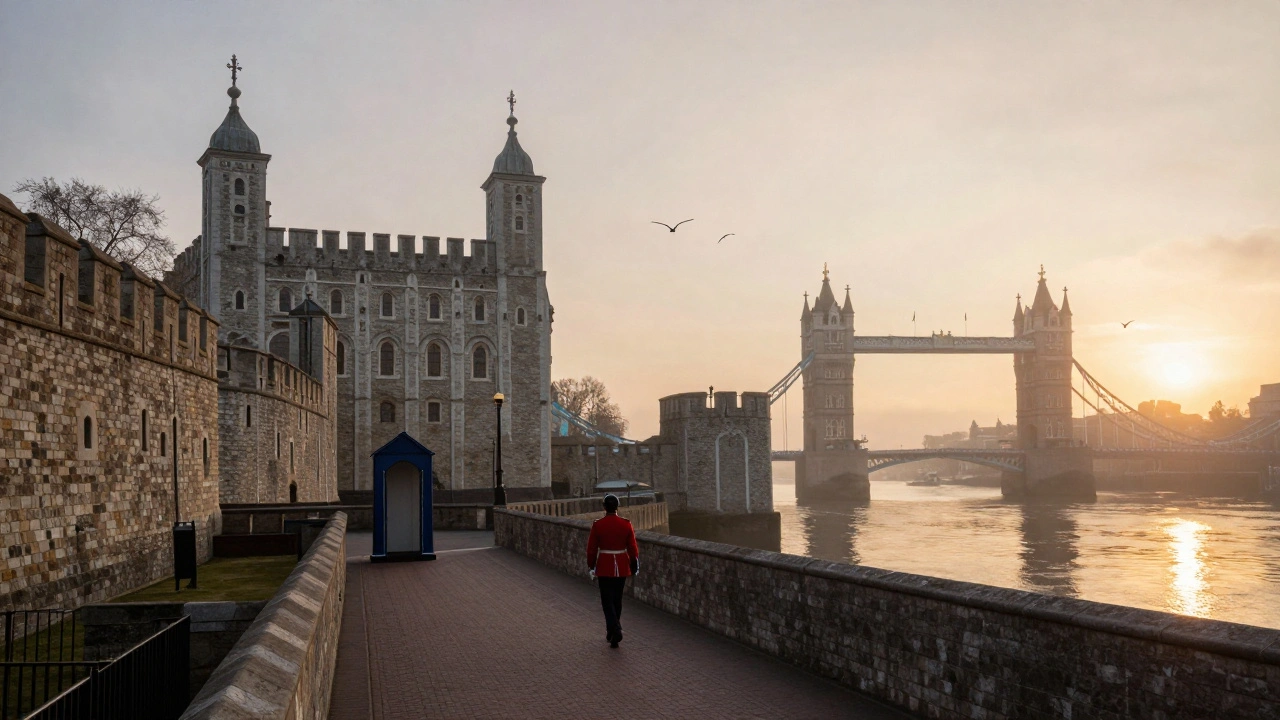Ravens at the Tower of London: Discover the Legendary Guardians of London

Lurking around the Tower of London, on a drizzly Tuesday or a sun-drenched bank holiday, you’ll almost always spot a group of serious-looking birds strutting about like they own the place. That’s because, in a way, they do. These aren’t your average city pigeons or crows; these are the legendary ravens—black-feathered “guardians” whose presence at the Tower is so wrapped up in London’s identity that their absence could, according to centuries of royal superstition, spell disaster for the entire kingdom. Strange? Maybe. But that’s London for you: a city where legends make headlines, and a bird can be an iconic attraction.
The Long-Shadowed Legend of the Tower Ravens
For as long as most Londoners can remember, stories about the Tower of London’s ravens have fluttered through the city’s folklore. The core legend? If the ravens ever leave the Tower, the monarchy—and perhaps the whole nation—will fall. This chilling prediction isn’t just pub banter; it’s referenced on everything from historic tour guides to BBC documentaries. Sometimes credited to the time of Charles II in the 1600s, it’s said the king, ever wary of omens, ordered ‘six ravens’ kept at the Tower at all times. The number matters: you need at least six ravens, plus a spare, as insurance, just in case a curious tourist gets nipped or a raven develops a taste for Tower life elsewhere.
Of course, ravens have lived around human settlements since before the Romans set up shop along the Thames, but the idea of them as royal guardians is pure London flair. Members of the Yeoman Warders, often called Beefeaters, are tasked with caring for these birds. Their official title is ‘Ravenmaster’—surely the coolest job description in UK civil service. Not just anyone can waltz in and train a raven, either. The beefeaters undertake special training to bond with their flock, learning everything from negotiating a feathery tantrum to handling talon-based mischief. If you ask around the Tower, you might even hear stories about the mischievous side of these birds—how one cheeky raven called Jubilee reportedly destroyed TV aerials, or how Merlin, another raven, was demoted for "conduct unbecoming a Tower raven.”
These ravens aren’t wild in the usual sense. They're closely watched and well cared-for: wings clipped but not entirely—they still flutter about but won’t get far beyond Tower Green or the battlements. If you’re walking near the White Tower or checking out Traitors’ Gate, keep an eye out for an ebony shadow hopping right in your path. Some of them have favourite perches and aren’t shy about posing for photos. A local tip: if you're hoping to spot them, mornings are best, just as the first visitor groups head through the gates. The ravens are less elusive when it’s quiet, and you’ll often catch the Ravenmaster offering breakfast—think treats like biscuits soaked in rich blood, raw meat, and seasonal fruit. Not for the squeamish, but perfectly on brand for a Tower legend.
Meet the Ravens: Introducing the Feathery Celebrities of London
Each raven at the Tower isn’t just a nameless extra. They have names, personalities, and reputations that sometimes rival that of staff or even some of the royals. Over the decade, some standout characters have graced the Tower lawns. Take Munin, named after Norse mythology, who once snuck away from the Tower and was tracked via social media after locals spotted her chilling at a pub in Greenwich. Then there’s Jubilee, who, as I mentioned, had a taste for technology. Gripp was known for his show-stealing antics, often sidling up to tourists right as the camera flash went off. Raven eggs are a big deal too—whenever chicks hatch, it makes local news, and the Ravenmaster often gives updates on their growth and names.
The Tower usually keeps at least seven ravens at a time, exceeding the minimum number to ensure the legend never gets dangerously close to reality. Each has a coloured band or tag for easy identification—but ask any beefeater, and they’ll tell you it’s the attitude, not the tag, that sets them apart. The birds are clever, capable of recognizing individual faces and even remembering behaviours. For Tower regulars, it’s not unusual to have a raven follow them, hoping for a cheeky snack or to swap a shiny trinket for a larger one. And these are smart trades—the birds have a knack for figuring out just how to charm (or outwit) staff, tourists, and local school groups who visit for the day.
The local climate, especially the damp winters and hot spells, means the birds sometimes need extra care. When a heatwave hits London, raven keepers switch up routines—placing ice blocks and water baths on the lawn for the ravens to cool off. During the long, rainy months, they’re given shelters dotted around the grounds, which you might spot on your next visit. It isn’t all show for tourists—tower life brings genuine care. Most visitors don’t know it, but the birds’ diet is monitored by animal nutritionists, with regular checks to ensure they’re as healthy as any pampered pooch in Chelsea. And yes, if a raven gets bored or moody, the Ravenmaster is the first to hear about it—usually signalled by a stolen key, a missing button, or a half-eaten leaflet found near the Bloody Tower stairs.

A Day in the Life: Ravenmaster Duties and Tower Routine
If you’re picturing some medieval druid wandering the grounds, think again. The current Ravenmaster, Chris Skaife, is a bit of a local legend himself. He’s often spotted on BBC’s Springwatch or dropping raven facts on Radio 4. The Ravenmaster’s job starts before dawn—long before school groups and selfie sticks sweep through the gates. The first order of business? Morning roll call. Each bird gets checked for health, hunger, and mischief. Then comes breakfast: rats, mice, chicken, beef hearts, and—occasionally—biscuits soaked in blood. Forget crusty breadcrumbs; these ravens dine like kings.
The Tower’s grounds may feel ancient, but the routines are up-to-date. Raven enclosures are cleaned daily, and boredom-busting tricks—hidden snacks, shimmering bits of tin-foil, puzzle boxes—keep the birds sharp. Regular enrichment sessions mimic foraging; if you’re lucky, you might see a raven rolling a walnut to break it open or expertly tossing pebbles into a tub of water, echoing scenes researchers at UCL have marveled at in published raven studies. Raven education is just as rigorous as a City worker’s CPD course: the birds are trained through a mix of treats and patience, learning to return to their quarters, pose on command, or politely (most of the time) accept a tourist’s admiration without snatching their sandwich.
The beefeaters—those iconic, red-and-black-clad guardians—aren’t just for show. Their relationship with the ravens is critical. Every day, they monitor each bird’s behaviour for signs of stress or illness, logging changes with almost clinical attention to detail. If a raven loses interest in food or isolates itself, the in-house vet is called straight away. It’s not all strict business, though. Each keeper bonds with the birds remarkably, knowing their quirks and what makes them tick. As a Londoner, you’ve probably walked past animals in Hyde Park or St James’s Park, but Tower ravens enjoy a kind of celebrity treatment, with routines shaped partly by tradition, partly by modern animal welfare science.
Between public feedings and private training, there’s time for interaction with visitors. Ravens are natural showstoppers, and you’ll often spot a cluster of curious spectators by the main tower steps. Kids especially can’t get enough; schools across London regularly book group tours to meet the birds. Some children even leave little shiny gifts on the old stone for the ravens to snatch. Interested in a close encounter? The best views are from the main walkways and Tower Green, but it’s all about timing—show up early or late in the day for fewer crowds and better eagle-eyed views (pun intended).
The Ravens in London’s Modern Culture
It’s not just at the Tower where ravens cast their long shadows. Take a stroll around the city and you’ll find them on T-shirts in Covent Garden, starring in kid-friendly books at Waterstones Piccadilly, and gracing murals in Shoreditch. Londoners see the Tower ravens as a blend of local mascot and living legend. Football fans trade raven stickers, schoolchildren write poems inspired by their antics, and even the National Gallery has nodded to their significance in period artwork. Social media helps keep their fame alive as well. Instagram and TikTok are flooded with candid shots and short clips of the ravens strutting or flying, their glossy feathers outlined against the pale stones of the Tower. Type #TowerRavens and see for yourself—don’t be surprised to find viral videos of Munin catching snacks mid-air or Ernie, the youngest raven, showing off his hopping skills.
London’s festivals and city life have borrowed bits from these iconic birds. At Halloween, themed tours run late into the night, blending true history with chilling fiction about disappearances and omens. Bars near Tower Hill offer raven-themed cocktails—ask for a "Black Feather" at the bar and see if you get an extra story. Even souvenir shops have joined in, with plush ravens and pins nearly as popular as the Queen’s Guard figurines. During the annual Open House London event, the Tower’s behind-the-scenes raven care routines sometimes open up to the public, giving locals a rare glimpse into what happens when the gates close and the last tour groups drift away.
If you’re thinking about some raven-inspired shopping, stick to official Tower gift shops or reputable online retailers tied to local craftspeople—you’ll get quality and authenticity, plus a story to take home that’s rooted in London’s history. For those keen to dig into the lore, the British Library has digital archives with letters, sketches, and firsthand accounts of the ravens from centuries back. And for the bookworm, Chris Skaife’s book, "The Ravenmaster: My Life with the Ravens at the Tower of London," offers more Tower tidbits and behind-the-scenes tales than you’d ever find on a quick tourist stop.

Planning Your Visit: Spotting Ravens and Making the Most of the Tower
Ready to meet the Tower’s real stars? First thing—check the weather. Ravens aren’t shy about rain, but their routines shift with the crowd size and the forecast. Buy Tower of London tickets online to skip long lines—especially in summer, when tourist numbers swell. Arrive right when the gates open or later in the afternoon for a proper look at the ravens hopping across Tower Green or staging playful flights from the battlements. Weekdays tend to be quieter, with Wednesday mornings being a sweet spot for families and local groups; you might even catch a beefeater introducing one of the birds during a live talk.
As you walk through the Tower, look out for placards and signs highlighting the ravens’ favoured haunts. Don’t get too close—ravens are curious, but a swooping black wing or a sudden caw can startle the unwary. (And yes, they might try to snatch the odd snack or shiny phone if you dangle it at feather-level.) Leave your own food in sealed containers. Fancy snapping a photo? Use a zoom lens or your phone’s portrait mode, and try catching the birds during the golden hour for the city’s best raven snaps. If you’re with kids, check the “Raven Quest” activity packs at the ticket desk—they’re a hit with local schools and keep little ones occupied on the hunt for beak prints or lost feathers.
The Tower isn’t the only place in London where you can brush up on raven facts. Swing by the Natural History Museum in South Kensington or the Horniman Museum in southeast London; both offer cool insights on corvid intelligence and British wildlife. Want to impress at the pub after your visit? Here’s a quirky fact: Tower ravens can live up to 40 years, outlasting many historical figures they outwit or annoy. They’re even mentioned in old Samuel Pepys diaries and inspired artists from Dickens to Neil Gaiman.
If you want a bit more raven magic during your London outing, find one of the city’s local craft workshops—places like Drink, Shop & Do in King’s Cross sometimes run animal-themed art sessions inspired by the Tower’s famous residents. Or sign up for a guided city walk; some local guides offer “hidden London” tours that stop outside the Tower for a few extra stories about the ravens and the city’s other, lesser-known feathered celebrities.
There’s something classic, a bit mysterious, and totally unique in watching the Tower’s ravens. For tourists, the ravens are a must-see, right up there with Big Ben and Beefeaters. But for Londoners, they’re part of what makes the city feel alive—a bit ancient, a bit cheeky, entirely unforgettable. Next time you’re passing through Tower Hill station or gazing over the Thames from a city rooftop, remember the black-feathered guardians keeping silent watch, carrying a little of London’s heart in every gleam of their beady eyes.


